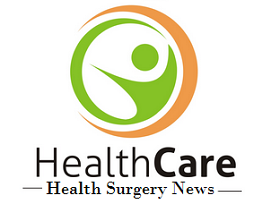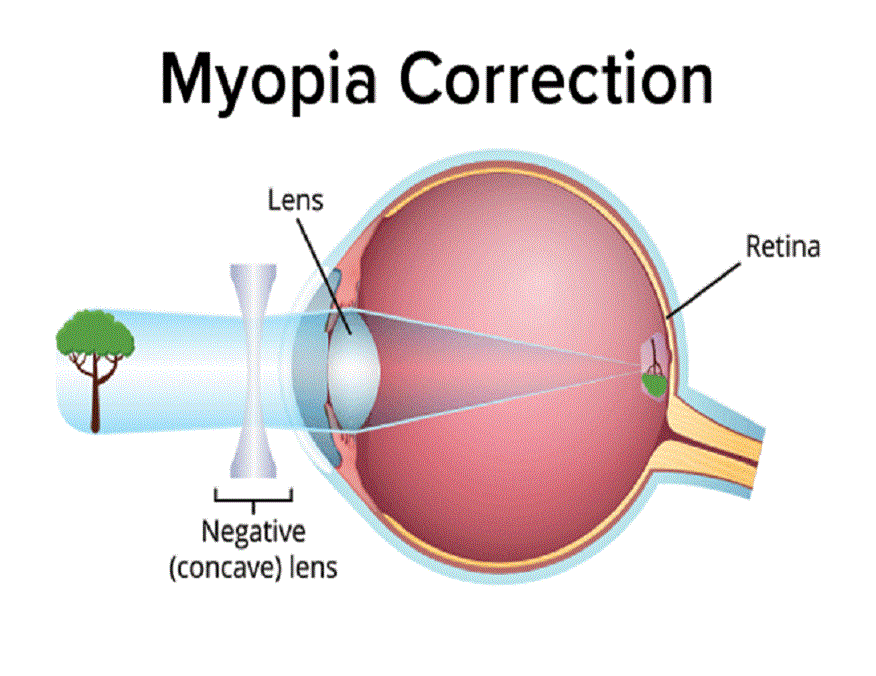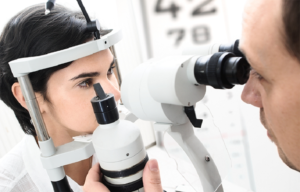You may have heard of myopia or nearsightedness, a refractive error in which distant objects appear blurry, but nearby objects are seen plainly. However, have you heard of excessive myopia?
High myopia is a more severe type of myopia that necessitates a stronger prescription. And because it typically begins in childhood, routine eye exams for children are essential for detecting early symptoms and preventing their progression.
Continue reading to learn more about myopia, its symptoms, diagnosis, and available treatments.
High Myopia
High myopia is myopia that has progressed to the point where it requires a spherical correction of -6 diopters or more. The diopter assesses the focusing ability of a prescription lens. Negative diopters increase lens thickness.
High myopia is caused by a very long retina or a steep cornea. It may worsen until the 20s when it stabilises or levels off. Symptoms of myopia extreme include:
- Headaches
- Impaired vision
- Eye strain
How is Myopia Diagnosed?
As with other refractive errors, myopia and severe myopia require an eye exam for diagnosis and are typically detected in childhood. It can be caused by visual stress or diabetes in adults.
In addition to medical and familial history, a retina, optic disc, and macula examination is part of the diagnostic process.
Treatment and Correction of Myopia
Your optometrist has a variety of methods for myopia correction. The most common solutions for refractive error and blurred vision are spectacles and contact lenses. In addition, myopia control is a method for preventing sight-threatening eye diseases and slowing their progression. Examples include:
Refractive Procedures
Laser-assisted in situ keratomileusis (LASIK) is an eye surgery that reshapes the layers beneath the cornea using a laser. Photorefractive Keratectomy (PRK) also utilises a laser to reshape the surface of the cornea.
Orthokeratology
Orthokeratology is a corneal reshaping lens used to correct and halt myopia progression. Nighttime use of these custom-fitted, rigid contact lenses gently reshapes the cornea. As a result, children do not need to wear spectacles or contact lenses during the day.
Intraocular Lenses
Intraocular lenses supplant the eye’s natural lens with an artificial lens while leaving the cornea intact. Typically, the procedure is performed to prevent or treat cataracts.
Atropine Ophthalmic Drops
In modest doses, atropine slows the progression of myopia. It is offered as droplets and ointments. Your optometrist can advise you if it is safe to use in conjunction with other treatments.
Maintain Your Vision with Corrective Lenses
There is no cure for high myopia, but you can preserve your vision and visual health by adopting the following measures:
- Slow down the progress
- Fix the refractive error.
- Detect and prevent eye diseases of significant risk
- Reduce your screen exposure
- Outside, sunglasses are worn to safeguard the eyes.
- Use sufficient illumination when reading or working
- Avoid smoking
- Maintain a nutritious diet
Treatments and methods are crucial to delaying myopia as more individuals and children develop it. In addition, regular eye examinations are essential for detecting associated eye disorders.



